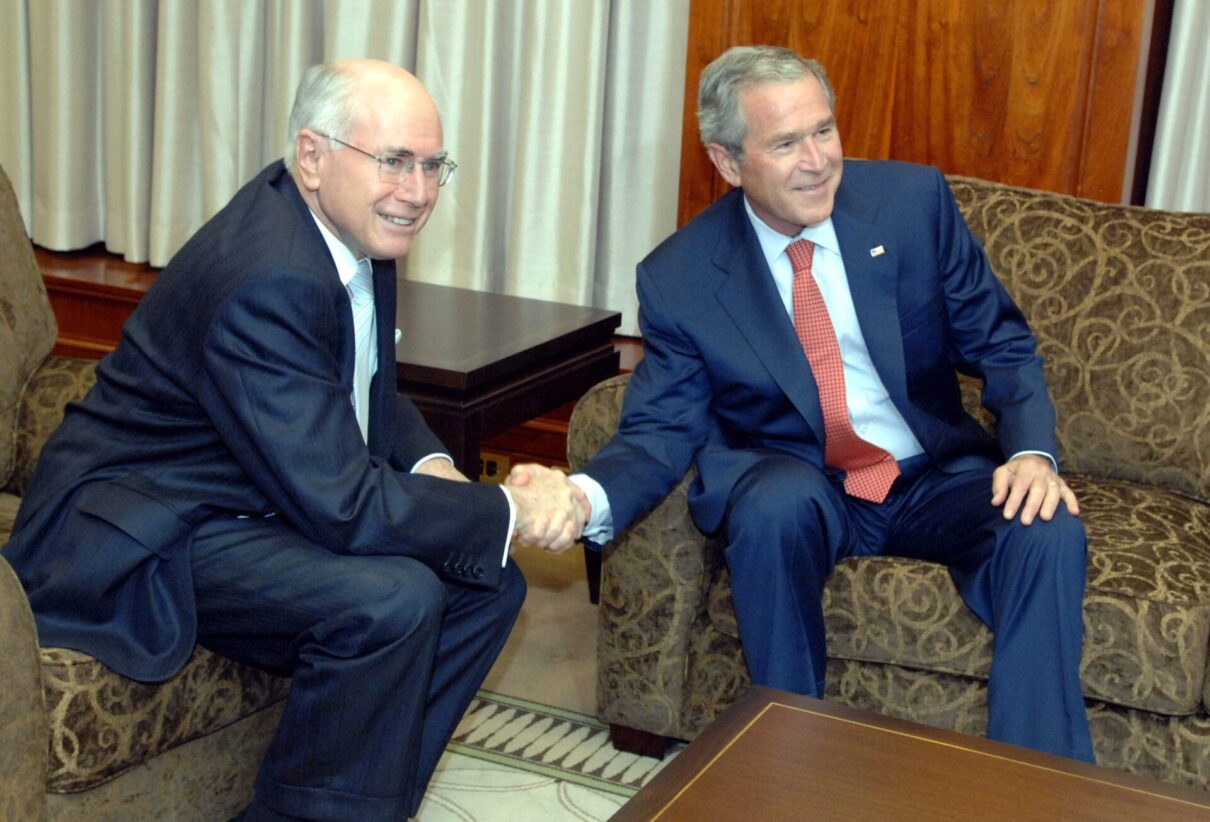AUSFTA: A bad deal then. Even worse now.

Australian consumers paid a high price for John Howard’s determination to sign a ‘Free Trade Agreement’ with the US.
At the time, many argued we had paid too much, and US President Donald Trump’s decision to impose tariffs on Australian steel and aluminium shows it can’t even protect Australia’s steel and aluminium from being slapped with arbitrary tariffs.
Those exports will now face 25 per cent tariffs in the United States.
This should serve as a wake-up call that the Australia-United States Free Trade Agreement (AUSFTA) can’t even do what it’s supposed to do: protect free trade between Australia and its most powerful ally.
AUSFTA was signed in 2004. The Howard Government had pulled Australia into the Iraq War and was dedicated to deepening ties with the George Bush-led USA through a trade deal.
The final text included no major concessions from the US, and, despite Australia’s focus on boosting agricultural exports, the US only gave small and gradual concessions on its otherwise protected and subsidised agricultural sector, and didn’t loosen restrictions on sugar imports at all.
Even before Trump’s first presidency, AUSFTA was failing on its own terms. An analysis from 2015 found that “[t]he critics were right … Australia and the United States have reduced their trade by US$53 billion with [the] rest of the world and are worse off than they would have been without the agreement.”
Australia signed away a lot to get this awful agreement, including undermining our systems of intellectual property, investment, and health.
Intellectual property
AUSFTA introduced stronger intellectual property laws to protect US interests.
This included an extension of the copyright period applicable in Australia.
In simplified terms, before AUSFTA, copyright would expire 50 years after the death of the author (for literary, dramatic, artistic, and musical works) or 50 years after creation or publication (for sound recordings and films).
After expiry, these works would enter the public domain, where they could be freely used, copied, distributed, and adapted. Copyright was extended to 70 years directly because of AUSFTA.
This has a real impact on the cultural products available to Australians.
In simplified terms, without this law change, essentially every song and movie created from 1955 to 1974 could now be in the public domain in Australia, including every Beatles album (1963 to 1970), ABBA’s Waterloo (1974), The Godfather (1972) and Cabaret (1972). Every Lord of the Rings and Narnia book could also be in the public domain, with Agatha Christie’s novels soon to follow.
As copyright was extended for existing works, Australia essentially transferred 20 years’ worth of additional sales income from Australian consumers to copyright holders, many of them American.
Consider the corporate behemoth that is Disney. Australia’s decision to extend copyright by 20 years means that Australians will continue to pay Disney for films that could be entering the public domain, such as The Aristocats (1970) and Robin Hood (1973), and corporate acquisitions such as the original Star Wars (1977) and Marvel comics.
AUSFTA also stops Australia promoting its cultural sector.
Historically, local content requirements – such as requiring a certain quantity of music played on Australian radio to be Australian – have been key to encouraging Australian output.
However, AUSFTA includes a ‘ratchet mechanism’ for these sorts of quotas, meaning Australia cannot raise the quotas and if a government ever lowers the quotas, they cannot be again raised.
AUSFTA was explicitly invoked as a reason behind Australia’s retreat from imposing local content requirements on streaming platforms.
Investment and procurement rules
AUSFTA restricts the ability of Australian governments to regulate foreign investment.
Australian governments cannot apply certain conditions on US investments, limiting their capacity to use foreign investment to strategically develop certain industries, as was historically done in the car industry.
Similar rules restrict Australian governments’ use of their procurement power to promote Australian industries.
Health
AUSFTA negotiations raised significant concerns about the future of the Pharmaceutical Benefits Scheme (PBS), an Australian policy innovation that keeps our medicine cheap and makes the US pharmaceutical lobby angry because they can’t charge whatever they want for medicines they sell in Australia.
Fortunately, Australian negotiators buckled under significant community pressure (some prompted by Australia Institute research) and didn’t make commitments that would directly raise Australian drug prices.
However, AUSFTA did create the opaque Medicines Working Group (MWG) and a right of review for certain PBS decisions, both of which opened up new channels for the US pharmaceutical lobby. Shortly after the MWG met, the PBS was weakened through the creation of F1 and F2 classifications.
Prime Minister Albanese has so far ruled out retaliatory tariffs and encouraged Australians to ‘buy Australian.’
AUSTFA makes it harder for Australians to do this, but now that the US has decided to ride rough-shod over its most basic ‘free trade’ aspects, Australia is well-placed to re-examine them.
Between the Lines Newsletter
The biggest stories and the best analysis from the team at the Australia Institute, delivered to your inbox every fortnight.
You might also like
Failing the test: Australian universities in crisis
Great countries have great institutions, but Australian universities are a mess.
Home economics: housing, living standards and the federal election
With housing affordability at an all-time low and the spectre of Trump looming large over our region, Australians’ standard of living will be at the heart of the debate from now until election day.
Australia has power, why don’t we act like it? | Allan Behm
In a world of uncertainty, it is more important than ever for Australia to stop dismissing ourselves as a ‘middle power’ and start exerting our influence on the global stage.


